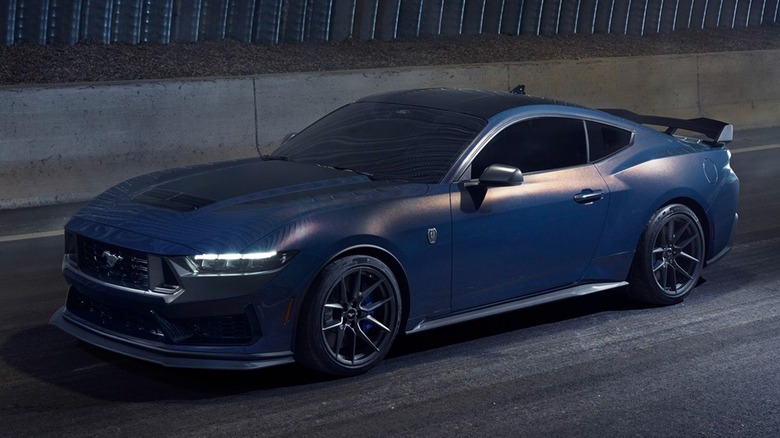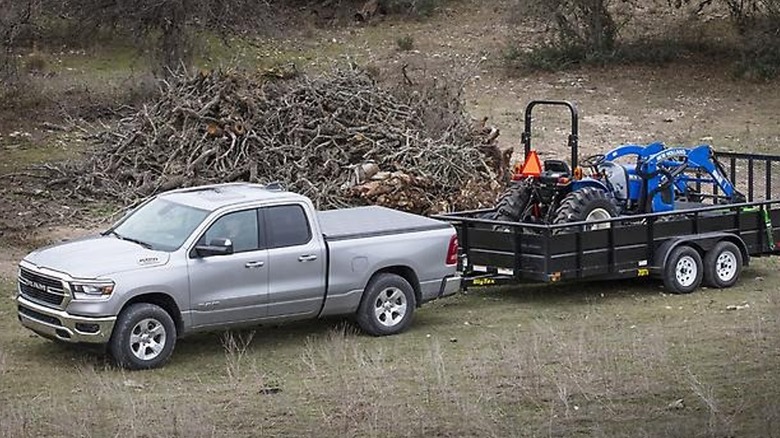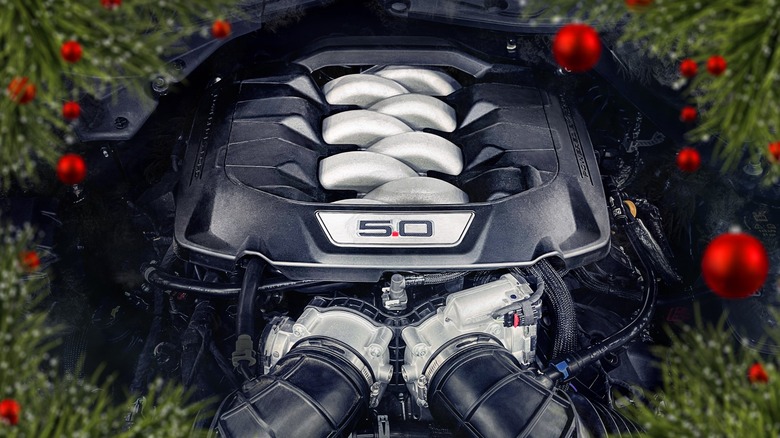5.7 HEMI Vs. 5.0 Coyote: How Do These V8 Engines Compare?
The rivalry between American V8 engines with unique names isn't anything new, dating back to the 1960s with names like 426 Hemi and 427 SOHC Cammer as at least one example. While those big block engines aren't likely to return to production vehicles anytime soon (at least, for now) we still have V8 internal combustion engines to compare. Two of the most popular V8 engines with unique names still available in 2024 are the 5.7 HEMI and 5.0 Coyote.
When we think of HEMI powered cars our minds inevitably drift back to the 1970s Hemi 'Cuda, but other cars came with HEMI engines too. The Chrysler Corporation brought back the HEMI with the introduction of the engine's third generation in 2003 Dodge Ram pickup trucks. While that 5.7 HEMI has seen improvements and powered multiple Chrysler vehicles over its 21-year production run, it's still available in select 2024 models. However, the HEMI engine's days are numbered.
The Ford 5.0 Coyote has similarly deep roots with its origin dating back to the late-1960s 302 cubic-inch V8. The 302 was renamed 5.0 (five-point-oh) in 1978. The 5.0 V8 powered numerous vehicles through 2001 until Ford's modular V8 engines took over. The 5.0 Coyote hit the streets again in the 2011 Ford Mustang and carries on today in the 2024 Mustang Dark Horse.
Comparing 5.7 HEMI and 5.0 Coyote mechanical specs
The first difference between the 5.7 HEMI and 5.0 Coyote you're likely to notice is the HEMI's 0.7-liter larger displacement. The 5.7 gets its 345 cubic-inches (5.65-liters) by using 3.92-inch (99.5mm) diameter cylinders and a crankshaft with 3.58 inches (90.9mm) of stroke. Whereas the current 5.0 derives 307 cubic-inches (5.038-liters) (the larger displacement held over from the Gen-3 Coyote) from a 3.65-inch (92.7mm) crankshaft stroke and 3.66-inch (93mm) diameter cylinders.
Other differences are found in the valve train. While both engines use overhead valves, the HEMI actuates its valves with a pushrod system operated by a single camshaft. In contrast, the Coyote employs dual overhead camshafts, eliminating the need for pushrods.
The 5.0 Coyote has a higher 12:1 compression ratio compared to the 10.5:1 compression ratio found in the 5.7 HEMI. Finally, the Coyote features an aluminum engine block and cylinder heads, while the HEMI uses aluminum heads mated to a cast iron block.
Which vehicles have 5.7 HEMI and 5.0 Coyote engines?
The 5.7 HEMI is found under the hoods of several cars, SUVs, and pickup trucks spanning the Chrysler, Dodge, Jeep, and Ram brands under the Stellantis umbrella. While Ram pickup trucks were the first to feature the 5.7 HEMI, it has also powered various iterations of Chrysler 300C, Dodge Charger, Challenger and Durango, and Jeep's larger SUVs like the Commander and Grand Cherokee.
The list of 5.0 Coyote powered Ford cars is much shorter since it's only used in 2011 and newer Mustangs and some upgraded F-150 pickup trucks. The most powerful 5.0 Coyote engines are found in the Ford Mustang Dark Horse, including the extra-expensive Dark Horse R track-only version. While the Mustang Dark Horse R features trick racing suspension components, a roll cage, and an upgraded dry-sump oiling system, it still uses the same 500-horsepower 5.0 Coyote engine found in the street legal Dark Horse. However, the Dark Horse 5.0 Coyote found on the street is hindered somewhat by emissions controls and pesky mufflers.
Despite its larger displacement, the 5.7 HEMI boasts maximum horsepower ratings hovering around 400 hp. Its lower compression ratio, pushrod valvetrain, and work truck roots take most of the blame for the limited horsepower. It's not really a fair power competition as the Coyote was designed to power Ford's most popular sports car and Chrysler put its horsepower tech into other HEMI engines.


